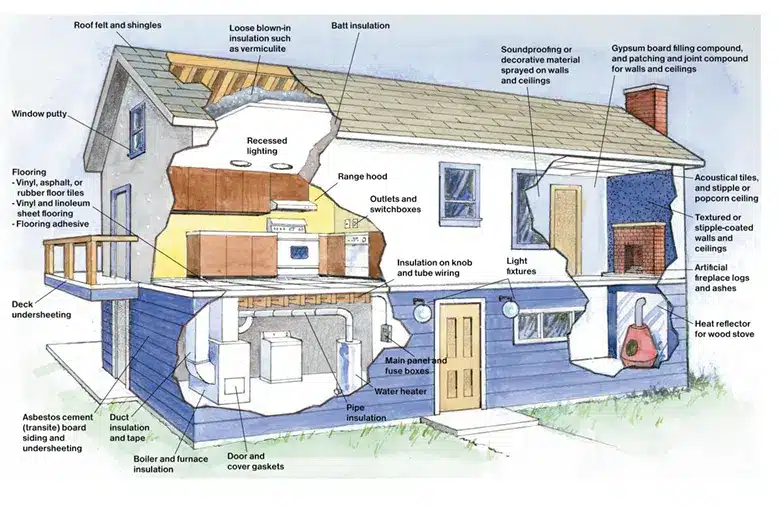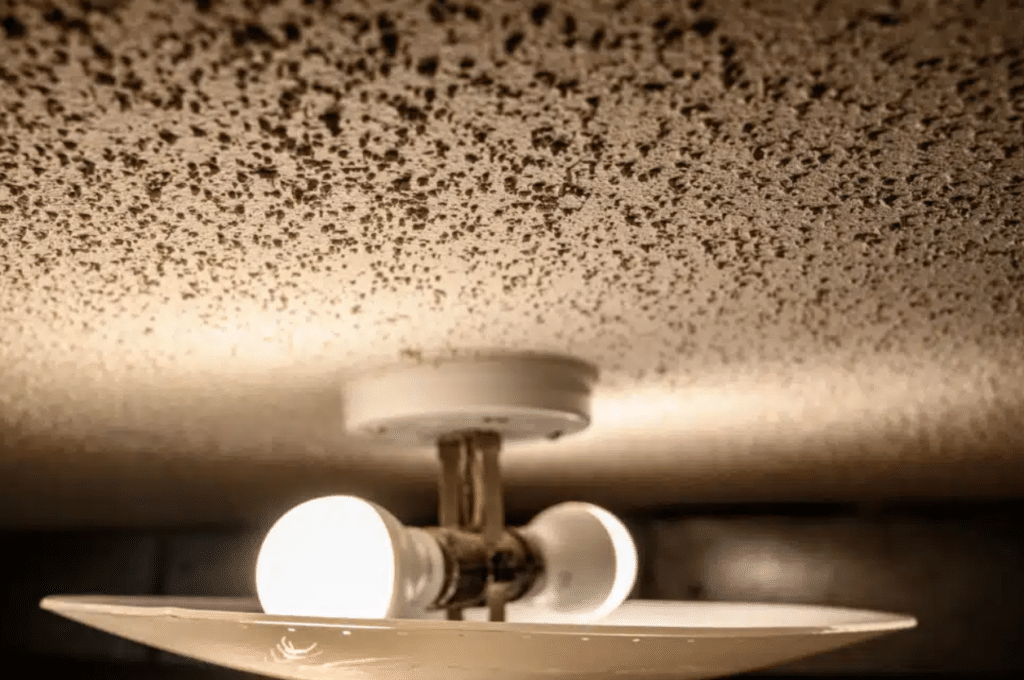Asbestos is a naturally occurring, friable material that has been used since the Stone Age. Friable materials can be easily crumbled or crushed into powder-like substances. Historically, scientists and researchers found that asbestos fibres were incredible electrical and heat insulators, while also being resistant to fire. This made it an excellent property for a wide variety of applications in the mid 1900s.
Around 1980, however, researchers began to notice a direct correlation between asbestos use and human lung diseases, the most common of which was mesothelioma (Lung Cancer). This led to a ban on asbestos use in Canada across a wide variety of manufactured and installed products.
Today, many Canadian homes still contain asbestos. Left undisturbed, asbestos is relatively harmless. However, if you’re looking to buy a home, or considering selling your property, its important to recognize and understand the risk to both human health and property values.
On This Page
Asbestos Use in The Home
Through the late 1800s and early 1900s, developers widely used asbestos during the construction and renovation of homes. As a lightweight, fire-resistant material, builders became heavily reliant on many materials containing the substance. It was also a local resource, as Quebec mined it in large quantities.

Common Locations of Asbestos
Asbestos was commonly contained in floors, walls, & ceilings of Canadian homes. Vinyl flooring, wall insulation, and ceiling tiles all possessed some of the concerning material.
In addition, it was commonly used for loose blown insulation in attics. Its fire retardant properties shined here, and it was thought that applications could even save lives.
One of the most common use cases of asbestos in ceilings was in the classic “popcorn ceiling”.
A fitting name, this type of finish on a ceiling was very common in the 60s and 70s. Builders would mix plaster with tiny particles of “vermiculite” and spread it across the ceiling. Once dry, the effect given was a textured, three dimensional surface. Residents often thought this was a very classy way to finish interiors as opposed to a plain, white ceiling.

Other areas commonly possessing asbestos are:
- Roof shingles
- Window putty
- Vinyl or tile flooring
- Belt insulations
- range hoods
- Water heater insulation
- Knob and tube wiring
- Artifical fireplaces
- Accoustic or ceiling tiles
- Furnace insulation and/or ductwork
Testing For Asbestos
If you’re concerned that you may have asbestos in your home, its recommended that you contact a professional for advice. Alternatively, you can order an asbestos test kit, like this one on Amazon.

The Asbestos Ban
In 1979, sufficient evidence existed to support the correlation between asbestos exposure and lung cancers as well as other diseases. The government of Canada decided to ban the manufacture of of most materials containing the harmful product.
However, as one could imagine, it takes time for a ban to fully eliminate a product from ‘the system’.
In 1985, the government banned installations or applications related to most human exposure, including ceilings, walls, and and flooring. It wasn’t until 1990 that the use was prohibited in fibrous insulation.
Given this timeline, most professionals accept 1990 as the construction year by which a home is guaranteed not to contain asbestos. Most municipalities in Canada still require a hazardous materials report prior to renovating a home before 1990.
The Dangers of Asbestos
Left alone, asbestos is generally considered harmless to individuals. The particles only begin to become a problem when they are disturbed and enter the air. This can cause breathing problems and eventually lead to lung scarring and cancer.
For this reason, many homes are bought and sold every year with this material inside. As long as buyers do not interfere with the applications, it is (generally) safe to live around.
Remediation
Unlike mold or rotting, there is not much required by means of remediation. Care and caution should be taken before disturbing substances known to contain asbestos. Appropriate PPE should be worn. If you wish to remove the substance, its recommended you hire a remediation or abatement expert.
Conclusion
When looking to buy or sell a home, it is important to understand the risks asbestos can cause to human health. Knowing where this compound was commonly used can help reduce seller liability or buyer obligation to remediate following closing. If you have additional questions, contact Us for more information.
This article is not meant to be used as health or legal advice. If you have asbestos concerns, contact a medical or legal professional.
